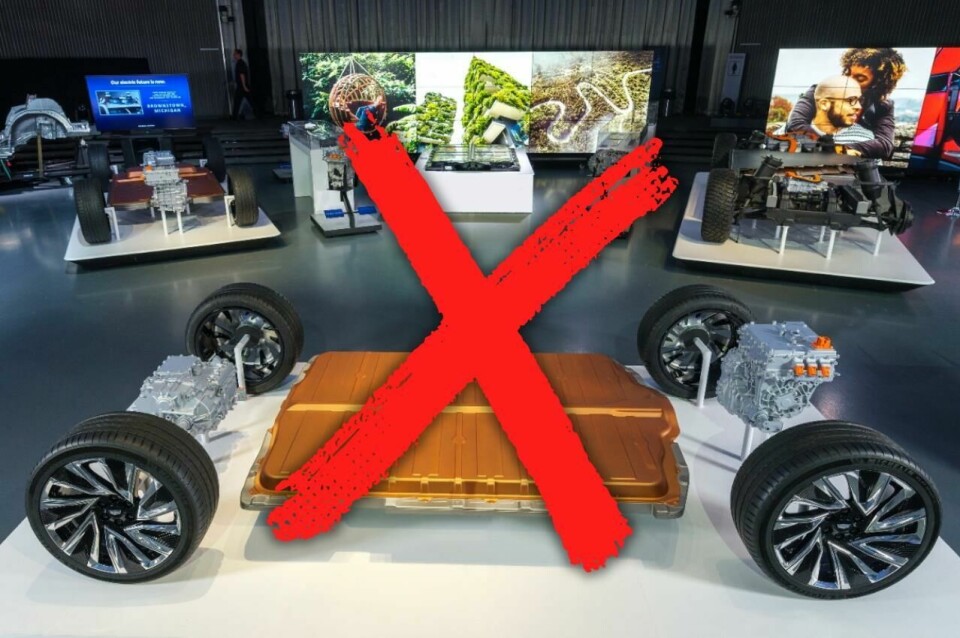General Motors shifts EV battery strategy by scrapping Ultium name as it balances EV ambitions with strong ICE demand
The carmaker has announced it is making a strategic shift by dropping its Ultium battery branding as it reconfigures its EV business. While reaffirming its commitment to electric vehicles, GM also continues to invest in internal combustion engines to meet demand.

GM scraps Ultium battery name as EV sales rise and ICE remains strong
General Motors is shelving its much-publicised Ultium battery brand as the company shifts gears in its electric vehicle (EV) strategy. The decision, announced at an investor event at GM’s Spring Hill, Tennessee plant, comes after years of promoting Ultium as the cornerstone of its EV future. Despite this change, the Detroit-based automaker continues to expand its EV offerings while remaining firmly invested in internal combustion engine (ICE) vehicles to satisfy ongoing demand.
Mary Barra, GM’s chair and CEO, reassured investors that the company’s profits are set to remain steady in the coming year. “We believe our EV losses peak this year, and we’re focused on significantly improving profitability next year,” she stated, emphasising GM’s commitment to achieving positive financial performance. While not providing specific guidance for 2025, Barra expects the company’s performance to stay “in a similar range” to 2024.
GM is caught in a balancing act, trying to accelerate its transition to EVs while ensuring that its high-profit ICE vehicles—primarily full-size pickups and SUVs—continue to bankroll those ambitions. “We expect the ICE industry is going to have a long tail, and it’s going to be a significant part of our future,” said Paul Jacobson, GM’s chief financial officer. He confirmed that GM will continue to invest approximately one-third of its capital budget in ICE improvements.
“The broader adoption of EVs continues to lag behind earlier expectations, with EVs accounting for just 4.9% of GM’s total sales in the third quarter”
The announcement about Ultium’s retirement marks a significant shift. Introduced with great fanfare just four years ago, the modular battery platform was initially presented as a “one-size-fits-all” solution for a wide range of EVs. “Without this common building block, we couldn’t have launched the wide range of all-new EV models that we have today,” said Kurt Kelty, GM’s vice president of battery cells, while confirming the Ultium brand’s demise.

Kelty says GM is switching to a more flexible battery approach, using different chemistries and suppliers.
Kelty further explained that GM’s decision to move away from Ultium stems from the need to optimise its battery approach for different vehicles. “What we’re going to do going forward is really optimise for each vehicle,” he said, adding that the automaker will now explore various battery chemistries to better match power and performance demands.
GM is shifting from a single-chemistry solution—nickel manganese cobalt cells developed in partnership with LG Energy Solution—towards a more flexible approach that includes prismatic cells produced with Samsung SDI.
Ultium may be over but GM’s EV focus is not
Despite the Ultium name’s retirement, the company’s focus on EVs remains strong. GM is on track to produce and wholesale 200,000 EVs in North America this year, a target reaffirmed by Barra. The company expects to reach a key profitability milestone by the end of the year, with its EV business becoming profitable on a contribution-margin basis.
“Having established a strong presence in the EV market across categories and prices, we can now take the next step”
However, the broader adoption of EVs continues to lag behind earlier expectations, with EVs accounting for just 4.9% of GM’s total sales in the third quarter. Rory Harvey, GM’s president of global markets, acknowledged the more conservative outlook: “If you looked at the original gradient of EV adoption, there’s no doubt that it was slightly more aggressive than it is now.”
Nonetheless, GM remains committed to expanding its EV portfolio, from the luxury Cadillac models to the return of the entry-level Chevrolet Bolt in 2026. Mark Reuss, GM’s president, confirmed that the new Bolt will feature fast charging and the latest technology, at a price “only slightly higher” than the previous model.
GM recognises that ICE is still hot in demand
In the meantime, GM is also reassessing its overall production strategy. The automaker has delayed the opening of its second all-electric vehicle plant in Orion Township, Michigan, originally slated for late 2024. “This gives us the ability to stop, take a breath, and refocus,” Harvey said, explaining the need to align production with real-world customer demand. Even as it repositions itself in the EV market, GM’s ICE business remains critical. The automaker continues to see strong demand for traditional vehicles, especially high-margin trucks and SUVs. By maintaining a foothold in both markets, GM believes it is positioning itself to succeed in the evolving automotive landscape.
As Kelty summarised, “Having established a strong presence in the EV market across categories and prices, we can now take the next step.” That step, it seems, involves moving beyond the Ultium brand and adopting a more versatile and targeted approach to battery technology, as GM continues its quest to strike the right balance between electrification and profitability.


